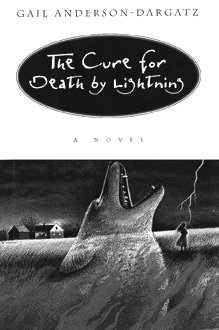 Her supernatural suspense story is fleshed out in a richly textured and realistic evocation of farm life and work in western Canada in the 1940s. "Everyone who milks has her own way and her own rhythm. At home I could tell who was milking just by listening to the rhythm of the squirt into the galvanized steel pails. My father's rhythm was too fast, without a steadiness to it; he rarely milked the cows because when he did, they kicked him.... Mostly it was my mother and I, milking to the rhythms of our own heartbeats, so close sometimes that the milk squirted into the pails in unison, like an iambic heartbeat."
Her supernatural suspense story is fleshed out in a richly textured and realistic evocation of farm life and work in western Canada in the 1940s. "Everyone who milks has her own way and her own rhythm. At home I could tell who was milking just by listening to the rhythm of the squirt into the galvanized steel pails. My father's rhythm was too fast, without a steadiness to it; he rarely milked the cows because when he did, they kicked him.... Mostly it was my mother and I, milking to the rhythms of our own heartbeats, so close sometimes that the milk squirted into the pails in unison, like an iambic heartbeat."
John Muir: Apostle of Nature
by Robert C. Pavlik
Free Press Contributor
|
by Thurman Wilkins University of Oklahoma Press, 1995 302 pages, $24.95 |
Every American should be familiar with the life and work of John Muir. Born in Scotland, raised on a farm in Wisconsin, and trained as a master mechanic, Muir became the nation's preeminent naturalist. The advent of the civil war and an unfortunate industrial accident banished him from the factories of the midwest to the wilds of the world.
 |
 |
 |
 |
 |
Contents on this page were published in the November/December, 1996 edition of the Washington Free Press.
WFP, 1463 E. Republican #178, Seattle, WA -USA, 98112. -- WAfreepress@gmail.com
Copyright © 1996 WFP Collective, Inc.
